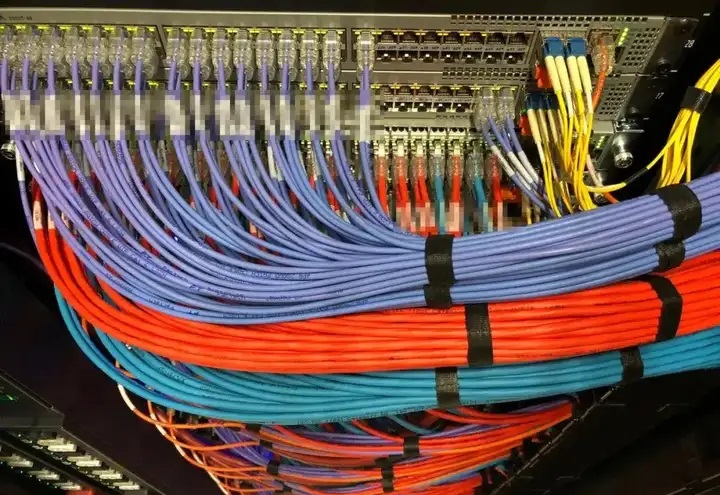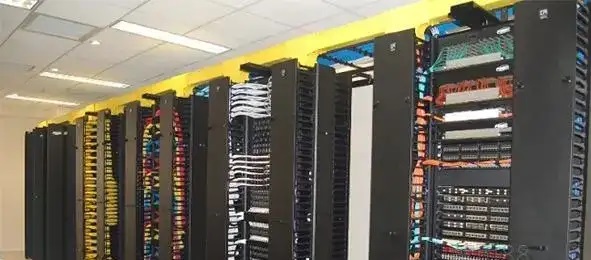In the world of networking, the RJ45 interface has become the standard for Ethernet connections, while USB interfaces dominate in personal computer peripherals. Understanding why RJ45 is preferred over USB for network cables requires a look into their design, functionality, and historical context. Here’s an in-depth exploration of the reasons behind the dominance of RJ45 in networking over USB.

1. Design and Functionality
RJ45:
The RJ45 interface is specifically designed for Ethernet networking. It uses an 8P8C (8 Position 8 Contact) connector, which means it has eight wires that can handle data transmission, power, and grounding. The design supports high-speed data transfer over long distances, making it ideal for both residential and commercial networking.
Key Features:
- Dedicated Networking Design: RJ45 connectors and cables are designed for network communication, offering stable and high-speed data transmission.
- Twisted Pair Cabling: The use of twisted pair cables in RJ45 connectors helps reduce electromagnetic interference, ensuring a stable connection.
- Scalability: RJ45 supports various Ethernet standards (10BASE-T, 100BASE-TX, 1000BASE-T), allowing for scalability from low to high-speed networks.
USB:
USB (Universal Serial Bus) interfaces are designed for general-purpose connections, primarily used to connect peripherals like keyboards, mice, and storage devices to computers. While USB can handle data transfer and power, it was not originally designed with networking as its primary function.
Key Features:
- Versatility: USB is designed to connect a wide range of devices, not just networking hardware.
- Power Supply: USB can supply power to connected devices, which is beneficial for peripherals that require both power and data transfer.
Plug-and-Play: USB interfaces support plug-and-play functionality, making it easy to connect and disconnect devices without rebooting.
2. Data Transfer Speed and Stability
RJ45:
- High Speed: RJ45 interfaces support high-speed Ethernet connections, currently up to 10 Gbps (10 Gigabit Ethernet). Emerging technologies promise even higher speeds.
- Stability: Ethernet connections via RJ45 are known for their stability and low latency, essential for activities such as online gaming, streaming, and large file transfers.
- Distance: RJ45 Ethernet cables can reliably transmit data over distances up to 100 meters (328 feet) for Cat5e/Cat6 cables without signal degradation.
USB:
- Speed Variations: While USB 3.0 and higher versions offer high data transfer rates (up to 5 Gbps for USB 3.0 and 10 Gbps for USB 3.1), they are still primarily designed for short-distance communication.
- Latency: USB connections can have higher latency compared to Ethernet, making them less ideal for stable, high-speed networking needs.
- Distance Limitation: USB cables are limited in length (typically up to 5 meters for USB 2.0 and 3 meters for USB 3.0) before requiring repeaters or hubs, making them impractical for larger network setups.
3. Historical Context and Industry Standards
RJ45:
- Networking Standard: RJ45 connectors became the standard in networking due to their introduction with Ethernet, which revolutionized local area networks (LANs).
- Adoption: The widespread adoption of RJ45 in both home and business environments solidified its position as the go-to interface for networking.
- Infrastructure: Existing infrastructure in buildings and networking equipment is primarily based on RJ45, making it the default choice for Ethernet connections.
USB:
- Peripheral Standard: USB was developed as a universal interface for peripherals, aiming to simplify connections for devices like printers, keyboards, and external storage.
- Late Networking Integration: USB networking adapters exist, but they emerged later and are primarily used for convenience in connecting single devices to networks rather than building network infrastructure.
- Consumer Focus: USB’s focus on consumer electronics and peripherals means it lacks the industry support and standardization found with RJ45 in networking.
4. Practical Considerations
RJ45:
- Robustness: RJ45 connectors and cables are designed to withstand frequent plugging and unplugging, and their locking mechanism ensures a secure connection.
- Dedicated Networking Hardware: Networking equipment such as switches, routers, and network interface cards (NICs) are designed with RJ45 ports, ensuring compatibility and optimal performance.
Power Over Ethernet (PoE): RJ45 supports PoE, which allows network cables to carry electrical power to devices like IP cameras and wireless access points, reducing the need for separate power supplies.
USB:
- Convenience for Single Devices: USB network adapters are convenient for connecting individual devices to a network, especially in portable scenarios like laptops.
- Lack of Infrastructure Support: USB lacks the widespread infrastructure and dedicated hardware support found with RJ45 in large-scale networking environments.
Conclusion
While USB offers versatility and convenience for connecting various devices, RJ45 remains the preferred choice for network cables due to its design, stability, and high-speed capabilities. The historical context and industry standards further cement RJ45’s role as the backbone of modern networking. As networking demands continue to grow, RJ45’s scalability and reliability ensure it remains a crucial component in the infrastructure of both residential and commercial networks.



